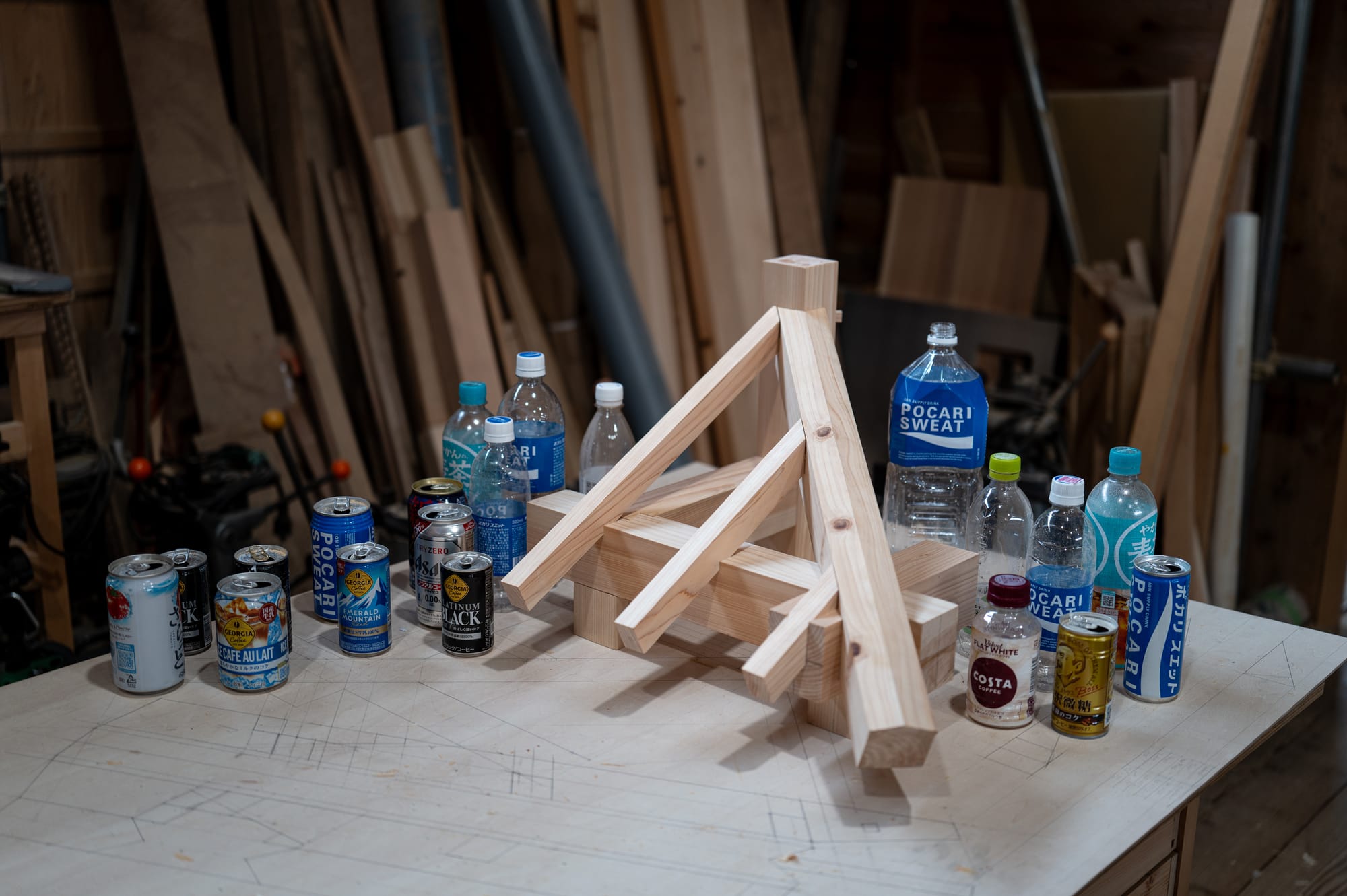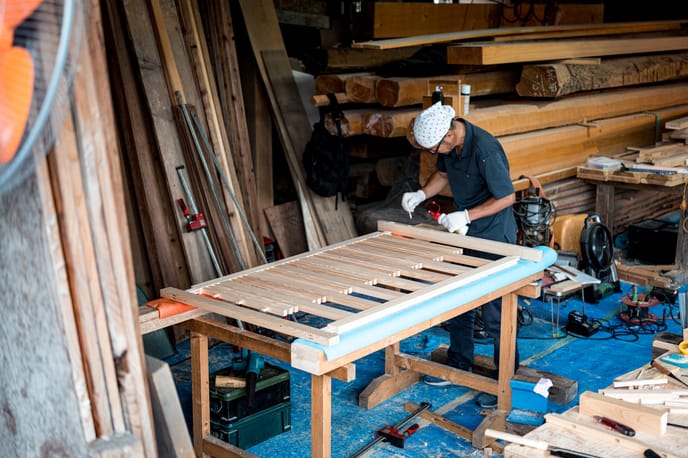In June, I returned to Somakosha to study compound angle joinery. The class involved making an orthographic drawing, layout of that drawing on wood, and cutting and assembling those parts into a model of a hip section of a roof. Most people do not need know how to build a hip rafter. But the ability to design and layout joinery with complex angularity—in anything—is what I walked away with.
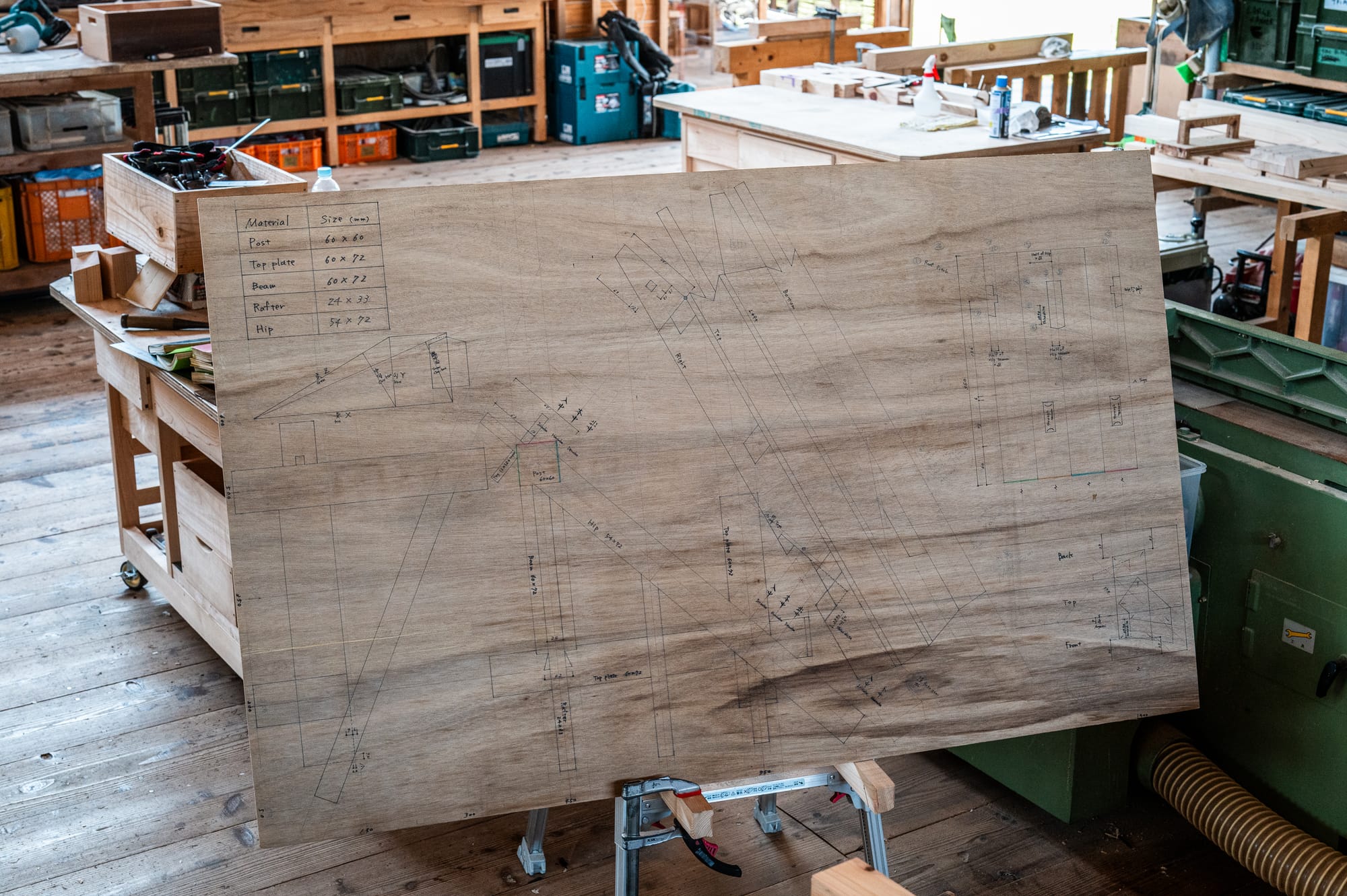
The class took place in high heat and high humidity. Sweat dripped from my elbows and every thing felt warm to the touch as if a hair dryer had been blowing through the shop. At times, the mental fog matched the thick afternoon air. Many cold vending machine coffees and pocari sweat was had to stay awake and hydrated.
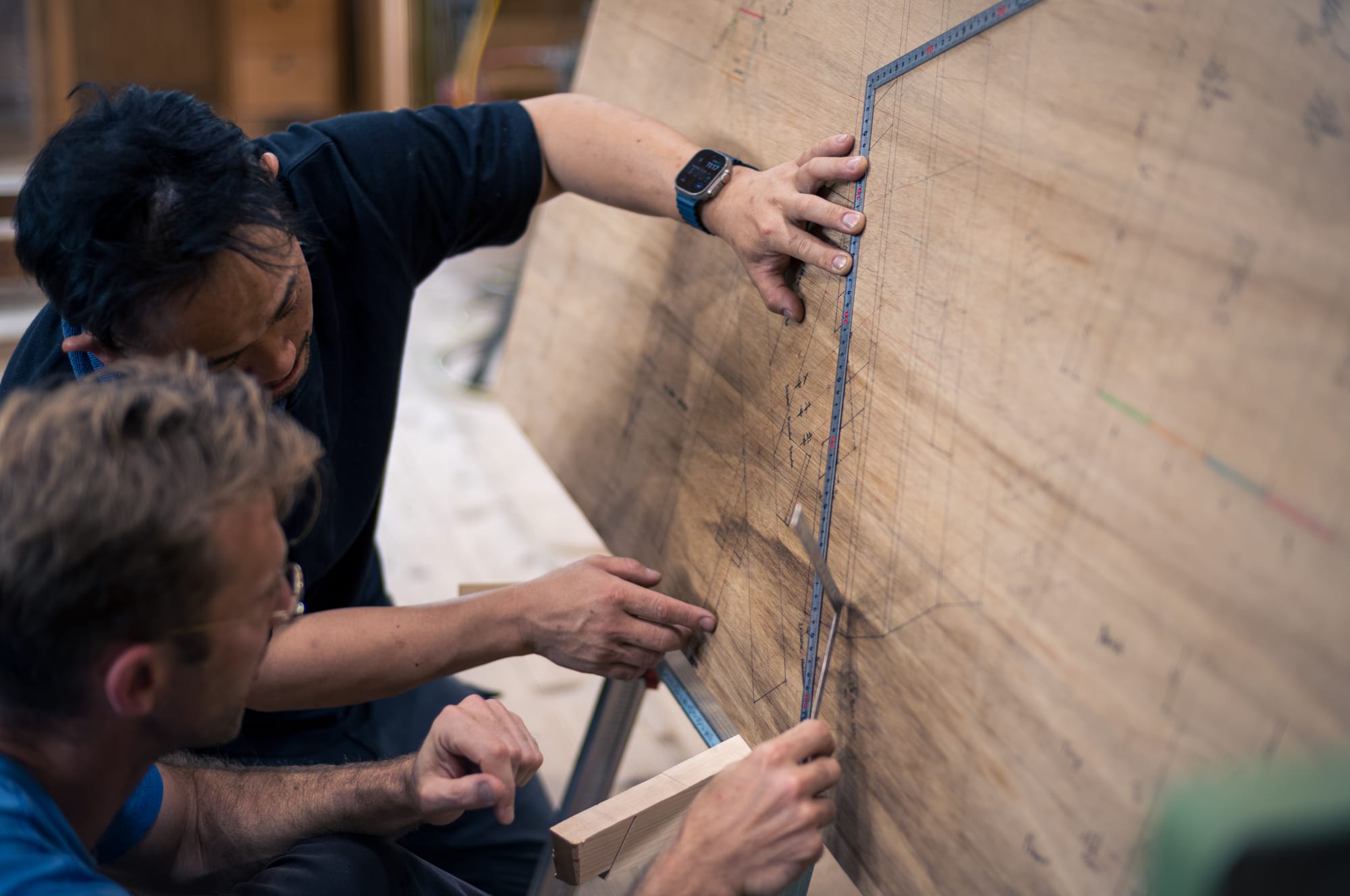
The drawing was made on a piece of ply that allowed for a 1:1 scale drawing of the hip rafter model in plan and elevation views. The remarkable thing about the drawing is that every part was derived from an adjacent view using squares at 90 and other ratios to accurately replicate angles.

Some triangles were drawn from obvious points on the previous part; some were transformations of several triangles using several shortcuts using the square. No trigonometry calculations were employed, only physical and mechanical markers.
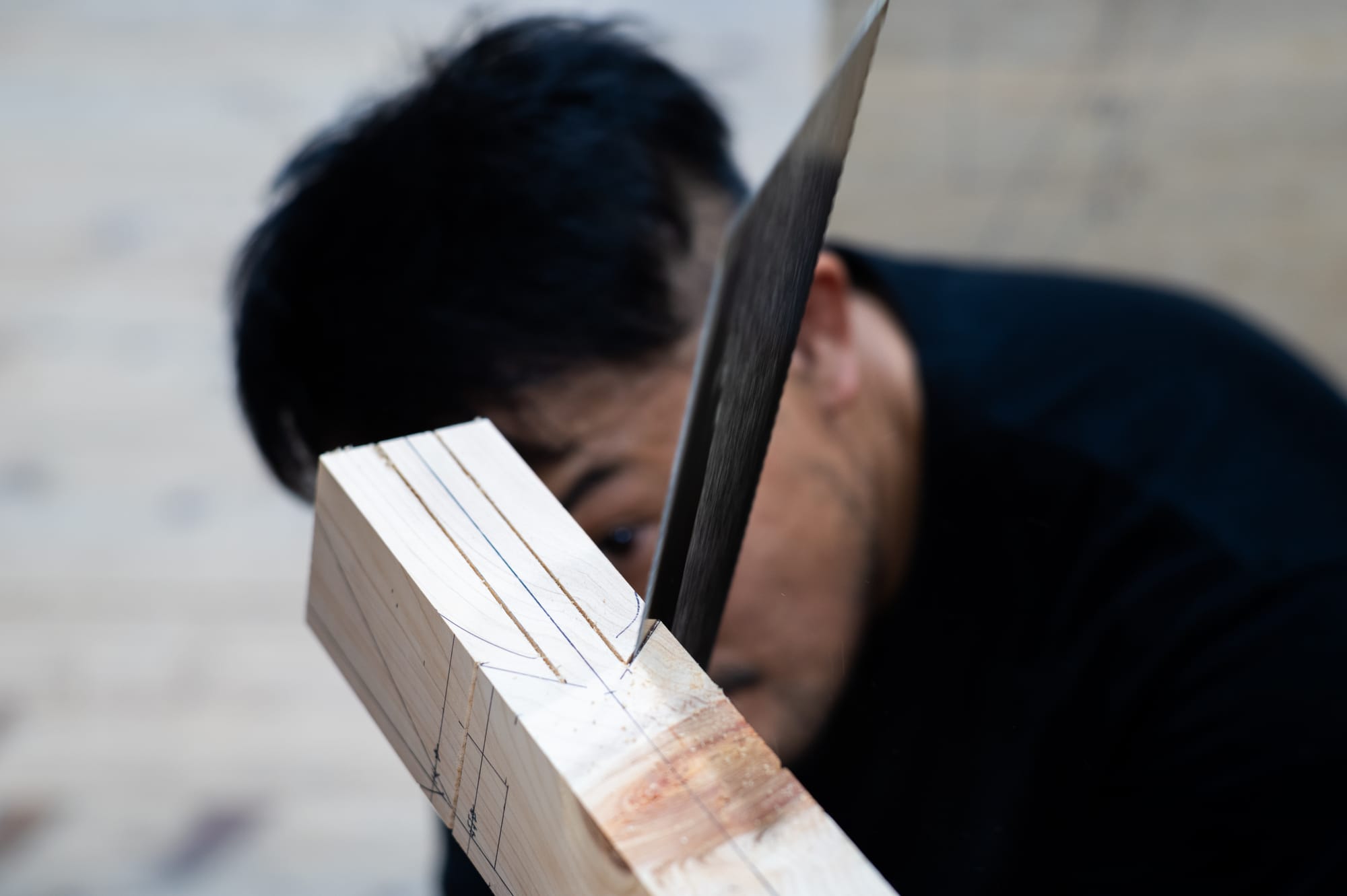
Someone from the US asked me if this kind of layout could be learned on their own in a few days. I told them that I doubted it. My mind was stretched, even with the support of the Somakosha master carpenters patiently explaining everything to me.

